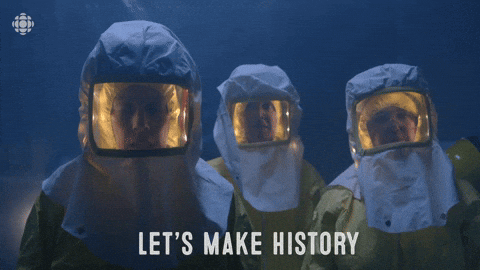- Bionic
- Posts
- The Bitcoin ecosystem
The Bitcoin ecosystem
ETF, NFTs, Ordinals, Satoshis & More
⏱️ 996 words. Under 6 minutes reading time.
Hello Team,

It’s been a big week.
The SEC’s approval of 11 spot Bitcoin ETFs has finally marked the culmination of a very long narrative arc. In fact, the Winklevoss Twins first submitted an ETF application over 10 years ago, back in 2013.
So what better time to explore the infrastructure and activity across a booming Bitcoin ecosystem?
Activate your laser eyes.
Let’s get into it ⏩️
Bitcoin is going beyond Ultrasound Money.
There’s a wave of technical innovation that’s shaping the next phase of the story.
We’ve stacked up the most interesting layers of value being added to the OG crypto asset. Read for yourself.
ON YOUR RADAR
These updates are on our radar. So we’re putting them on yours:
⛓️ Stacks is the Bitcoin layer 2 aiming to bring Bitcoin utility to Billions. Check the deck.
➡️ BRC-20 is the fungible Bitcoin token protocol. This thread gives you a flavour of emerging projects to keep an eye on.
🦊 Fox News has built Verify on Polygon. Can they stop fake news?
🥽 Apple Vision Pro can be pre-ordered from Friday 19th ahead of 2nd Feb release.
🦉 Read how AthenaDAO is advancing women’s health research, education, and funding.
THE BREAKDOWN
This is a beautifully accessible intro to Ordinals from the teams at Bitcoin Magazine and Magic Eden 🤝
It has all the info you need to understand this new part of the Bitcoin and NFT ecosystem - as well as equip yourself to get active.
Watch for yourself. Or ingest the main points ⬇️

The TLDR: "Ordinals" are a new concept in the Bitcoin network that is significantly altering the landscape of NFTs.
What’s their Functionality? Unlike NFTs on other blockchains, ordinals allow for embedding of data (like text, audio, video, or JPEGs) directly onto the Bitcoin blockchain.
Comparison with Other NFTs: Typically, NFTs on other chains link to a JPEG or other media stored on a separate server, posing risks such as the image being removed or the domain being seized. Ordinals eliminate these risks by embedding directly on the blockchain.
Technical Background: The ordinal protocol was created by Casey Rodarmor, a former Bitcoin core contributor. It involves a system for numbering and transferring individual satoshis (the smallest unit of Bitcoin) on the Bitcoin network, effectively enabling native, on-chain NFTs within Bitcoin.

OK, run that by me again: Ordinals are essentially individual satoshis (the smallest unit of Bitcoin), acting like serial numbers. They allow tracking of the history of a specific Bitcoin, including its mining date, previous ownership, and transfer records. Some satoshis are considered rarer than others based on various factors like their mining date or the entity that mined them.
Concept of Bitcoin Inscriptions: Inscriptions are a method of embedding data onto a Bitcoin. This data can range from text, images, audio, to video. Examples include personal items like a family recipe or a favorite song. Once inscribed on the Bitcoin blockchain, this data becomes permanent and independent of third-party hosting.
Inscription Numbers and Rarity: When data is added to a Satoshi, it receives a unique inscription number, serving as a timestamp for when the data was added. Earlier inscriptions (with lower numbers) are generally considered more valuable, akin to first edition collectibles.

Bitcoin Inscriptions and Their Community: Each inscription is numbered in the order they were made, starting with Inscription Zero by Casey Rodarmor. There are inscription clubs where people discuss, trade, and meet based on their inscription numbers.
Introduction to Attributes and Uncommon SATs: Attributes are special Satoshi with additional data attached. Some artists choose to inscribe their art on 'uncommon SATs' – the first satoshi mined in every block, which are rare (appearing one in every 2.4 billion SATs). There are also 'rare SATs' without inscriptions, valued for their rarity or 'clean' status.
WTF is a Bitcoin Recursion? Bitcoin recursions use data from previous inscriptions to create new ones. This allows for storing large amounts of data on the blockchain without needing to store all of it directly. An example project, OCM Dimensions, uses recursion to create evolving digital art pieces.

OK. How do I Get Started? Well, you can acquire Bitcoin from platforms like Coinbase for ease of use.
Inscribing an Ordinal: The next step involves downloading an ordinals wallet. The Magic Eden wallet is available in the Chrome Store. After transferring Bitcoin to this wallet, users can connect to Magic Eden.
Using Magic Eden for Ordinals: Magic Eden is a user-friendly platform for creating ordinals. It allows users to drag and drop images to start their journey as ordinal creators. The platform offers tools for browsing, collecting, and auctioning digital artifacts, as well as creating and selling digital collectibles.
Security and Wallet Management: Remember to store Bitcoin in a hardware wallet. The adage "not your keys, not your coins," is very true. Be extra diligent in keeping control over your digital assets.
OK - so now you’re ready to get stuck in for yourself!
The Bionic newsletter is meant for informational purposes only. It is not meant to serve as investment advice. Please consult with your investment, tax, or legal advisor before making any investment decisions.
Disclosure: Authors may own cryptoassets named in this newsletter.


Reply